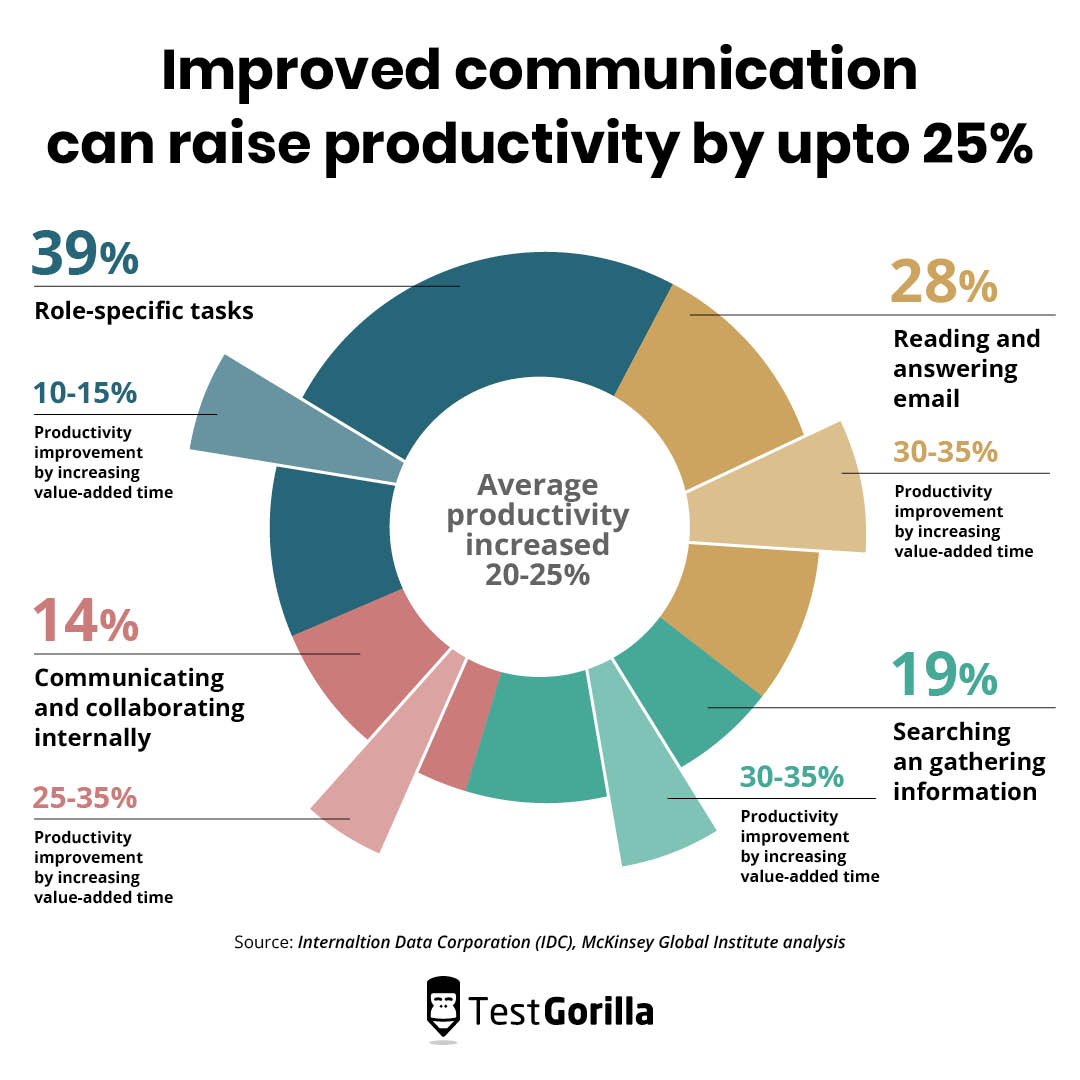To a large extent, a candidate’s dominance determines how they carry out their tasks, relate with other employees and their team leaders, and attend to clients.
Candidates with dominant personalities often go to any extent to complete their work as effectively as possible. Although this is a trait most employers look out for in candidates, relating with candidates who have dominant personalities can sometimes come with challenges.
As a recruiter, hiring candidates who can complete their tasks efficiently must be one of your top priorities. However, to find and hire such candidates, you need to understand what makes them work the way they do and how best to relate with them.
In this article, we will discuss the characteristics of those with a dominant personality, why you should hire candidates with dominant personalities, and how to interact with such candidates in the workplace.
Table of contents
About the dominant personality
The dominant personality is a set of traits that enable candidates to cultivate innovative ideas, share those ideas with others, and put them into action while maximizing productivity.
Dominant candidates are results oriented and have a hands-on personality that makes them highly efficient. They are independent and don’t need constant supervision to carry out even complex tasks at work.
Those with a dominant personality like to get work done properly and often prefer to complete tasks by themselves to ensure that the results meet their high standards.
Many hiring managers believe that dominance is an essential trait when hiring leaders for their organizations. But it isn’t just important for leadership roles – all employees need some degree of dominance to work efficiently and pass their ideas on to others.
Candidates can have varying levels of dominance. Though different companies search for different traits in their candidates, extremely high or low levels of dominance might do more harm than good.
As such, before you start your recruitment process, it’s paramount that you determine the level of dominance required for a position and how to find candidates with that degree of dominance.
What are the characteristics of candidates with dominant personalities?
One of the key traits hiring managers look out for during recruitment is dominance. This is because people with dominant personalities can often be highly effective, especially since they don’t need supervision to complete tasks efficiently.
Whether you’re conducting interviews or giving orientations to new employees, you can easily spot dominant traits in candidates when you know what to look for. Here are the basic characteristics of candidates with dominant personalities:
Excellent communication skills
Improving communication can increase an organization’s productivity by up to 25%, which is a compelling reason to hire an applicant with a dominant personality.
Candidates with just the right degree of dominance know how to communicate effectively to help everyone on their team understand the plan and how to achieve their goals.
When they’re at their best, dominant employees’ communication skills enable them to relate well with others and share their ideas without imposing on others or overlooking anyone.
Influential characteristics
People with a dominant personality are known to have a strong influence on others. In extreme cases, this influence can make other employees on their team feel uncomfortable sharing their ideas or opinions. But if dominant employees handle their influence well, it can bolster success in their team.
Able to manage stress
Dominant candidates can often perform effectively even under stress. So, if they encounter a difficult task or have to handle various tasks simultaneously, they still make sure to produce great results.
Confident in themselves
Candidates with dominant traits are confident and aren’t afraid to voice their opinions and ideas. This characteristic helps them convey their ideas clearly and convince others to agree with their plans or points of view.
Determined
Since dominant candidates generally want things done their way, they are willing to go to any lengths to ensure they achieve their goals. As a result, they display exceptional determination, especially when executing their plans.
Generally more curious than others
A dominant candidate is more likely to ask questions during a meeting because they think critically and weigh the advantages and drawbacks of taking a certain course of action before agreeing to complete a task.
Although this trait might make them difficult to deal with at times, it also makes them efficient. Dominant candidates are risk-takers. However, they always prefer getting all the information about a plan, especially one that isn’t theirs, before agreeing to it.
How to handle employees with a dominant personality at work
Many hiring managers view dominant personality traits as negative since they might be difficult to handle. However, understanding the dominant personality enables you to better manage these traits so that they benefit your business.
Here are six ways to effectively handle candidates with dominant personality traits to ensure that they bolster your company’s success:
1. Give them room to voice their ideas
One of the keys to managing candidates with dominant personalities is allowing them to express themselves. By preventing them from sharing their ideas or views on an issue, you inhibit them from fully displaying their potential.
Giving dominant candidates room to voice their ideas doesn’t necessarily mean accepting all they have to say. Let them express themselves first, but also make sure that they see things from your point of view.
2. Set boundaries
Candidates with a dominant personality might sometimes overstep their boundaries, which could cause disruptions or disagreements with other employees. Setting boundaries helps candidates understand what behaviors and actions are acceptable early on.
3. Encourage other employees to share their opinions
This tip is useful for building a team that excels, especially if it includes multiple people with dominant personality traits.
Encouraging other employees who don’t have dominant personalities to share their opinions exposes those with dominant personalities to other ideas. Ideally, all the team members, dominant or not, will then come together to form an idea they all agree with.
4. Assign them tasks that suit their strengths
Naturally, an employee with a dominant personality takes a lot of risks. Although this trait often makes them spontaneous, it also makes them highly productive. Giving them challenging tasks keeps them motivated to do more, pushing your business further toward its goals.
5. Make sure to treat them with respect
Candidates with a dominant personality generally don’t like confrontation. Highly dominating employees tend to raise arguments with their team leaders as soon as they feel disrespected.
Thus, when handling dominant employees, it’s always a good idea to treat them respectfully. In doing so, you bring them to a common understanding with the rest of the team while minimizing arguments during meetings.
6. Talk to them privately
Dominant candidates can feel threatened when corrected publicly. They generally appreciate it when you discuss issues with them personally rather than confronting them in front of their colleagues. Try to communicate your thoughts on their behavior without reprimanding them up front.
The ideal way to test for dominance during recruitment
Understanding your employees’ personalities is a major step toward achieving your organization’s goals. If you’re looking for candidates who are goal oriented and willing to put in time and effort to produce results, consider hiring those with dominant personality traits.
However, since you can’t fully understand a candidate’s personality by simply meeting them once, you need to use other means to test for dominant traits in each applicant. Fortunately, we have many pre-employment tests in our test library that can help you do that.
Our personality tests provided comply with the Equal Employment Opportunity Commission and enable you to find the best candidate for the job. Sign up for TestGorilla to access our test library today.
Related posts
Hire the best candidates with TestGorilla
Create pre-employment assessments in minutes to screen candidates, save time, and hire the best talent.
Latest posts
The best advice in pre-employment testing, in your inbox.
No spam. Unsubscribe at any time.

Hire the best. No bias. No stress.
Our screening tests identify the best candidates and make your hiring decisions faster, easier, and bias-free.
Free resources
This checklist covers key features you should look for when choosing a skills testing platform
This resource will help you develop an onboarding checklist for new hires.
How to assess your candidates' attention to detail.
Learn how to get human resources certified through HRCI or SHRM.
Learn how you can improve the level of talent at your company.
Learn how CapitalT reduced hiring bias with online skills assessments.
Learn how to make the resume process more efficient and more effective.
Improve your hiring strategy with these 7 critical recruitment metrics.
Learn how Sukhi decreased time spent reviewing resumes by 83%!
Hire more efficiently with these hacks that 99% of recruiters aren't using.
Make a business case for diversity and inclusion initiatives with this data.






















